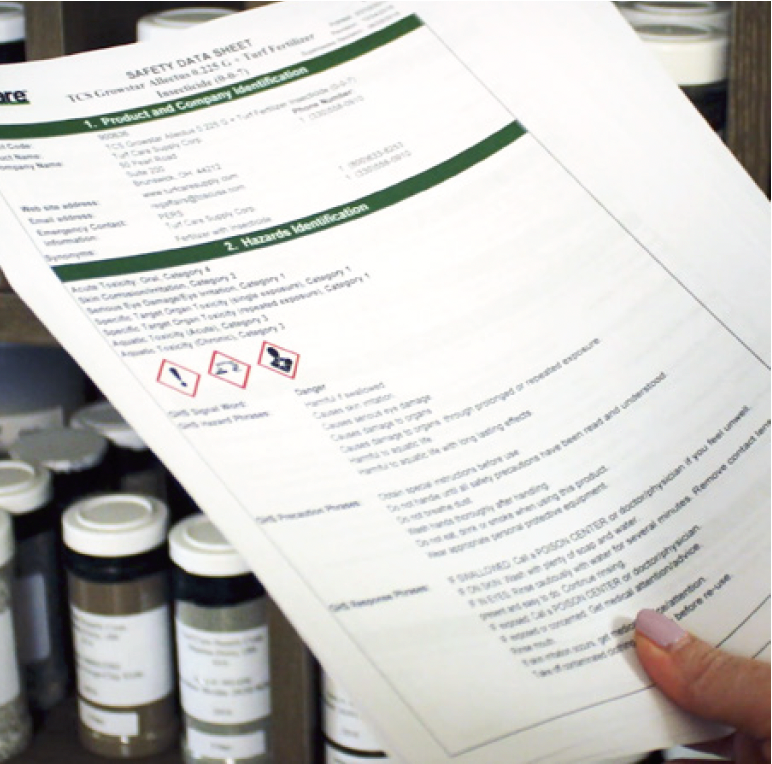Blog Layout
HOW BOTH MUST WORK IN HARMONY TO ENSURE A BEAUTIFUL LAWN
It’s no secret that irrigation and fertilization need to be paired together in order to maintain a healthy, beautiful lawn. It’s important to understand that these two programs need to work in harmony in order to optimize plant nutrient uptake and help sustain a healthy environment. So before you just go off and water a lawn this season, review these 7 steps to ensure you’re irrigating your turf grass to the fullest:
1. PH TEST SOIL AND WATER!
Soil testing
the pH of your lawn is key to understanding the proper amount and type of fertilizer, control product or soil amendment you will need to manage a lush, healthy turf but it’s also crucial to pH test the water you’re applying to turf grass as well. If a lawn is experiencing consistent pH imbalances, even after applications of soil amendments, the pH of the water source being dispersed can be the culprit to the consistent imbalance in soil. If irrigation is too acidic or basic, it will affect the pH balance of the soil so be sure both soil and water pH are aligned.
2. LEARN THE SOIL TYPE OF THE AREA
Knowing whether turf grass soil in an area is clay, sand or silt will not only better your understanding of the amount of fertilizer, control product or
soil amendment
needed but it will also help you define the soil’s water holding capacity. For example, sandy soil can hold no more than 0.75 inches of water per foot of soil depth; if irrigation is exceeded in a sandy soil then nutrients mobile in the soil like nitrate-nitrogen can leach below the root system.
3. IRRIGATE TO THE SPECIFIC TURF GRASS OF THE AREA
Each species of turf grass has a different root zone (the volume of soil inhabited by the plant’s root system-EDIS, University of Florida IFAS Extension) and varies in water needs. Knowing the depth of the root zone will determine the maximum amount of water that can be applied when irrigating. Learn whether a lawn has cool- or warm-season turf grass to help establish the proper amount of water a plant needs as well as species root zone depth characteristics (the root zone will enlarge as turf grows). Contact your local extension office for help determining grass species.
4. UNDERSTAND YOUR IRRIGATION SYSTEM WATER APPLICATION RATES
Calibrating an irrigation system like a sprinkler, hose, or in-ground system is essential to correctly applying the proper amount of water a lawn needs. To measure the water applied over a set period of time, use uniform catch-cans like coffee or tuna cans, and spread them around the water zone of a lawn, scattering at random within the area (all catch cans need to be the same, if you’re using tuna cans, then all must be tuna cans). Turn on water for 15 minutes. After this time, turn off water, take a ruler and measure water in each catch-can. The more uniform the water, the better water application rate is present. Repeat for each different zone. For more information, check out University of Florida IRAS Extension’s article on How to Calibrate your Sprinkler System by L.E. Trenholm’s, J. Bryan Unruh’s and J.L. Cisar’s.
5. WATER WISELY!
Turf grass irrigation needs to change as seasons change. Summer stress will bring plants to reduced growth; fall and spring will bring heavier growth while winter brings turf dormancy. Just like you adjust a lawn care program around the change of seasons, it’s important to adjust the frequency of irrigation as well. Modifying irrigation will help encourage a deeper and stronger root system, utilize the fertilizer you apply more efficiently and help manage drought-stressed turf.
Try allowing your turf to tell you when it needs water by watching for these signs:
- Folding of leaf blades: This is a natural response to a stressed plant from water loss. Watch for the turf leaf blades to begin curling lengthwise.
- Mower Tire Tracks & Footprints Remaining Visible: When a lawn is drought-stressed, mowing tire tracks and footprints will remain visible long after they are made.
- Blue-Gray color: This coloration is an indication of stressed lawn in need of water.
- Plant Wilting: This can be seen in lawns under stress from drought.
6. LIGHTLY WATER FERTILIZER AFTER APPLICATION
The last thing you want is to lose all the hard work and money you put into treating your lawn. The best way to prevent unsightly burning of grass leaves or being washed away from a heavy rain is to lightly water immediately after an application in order to initiate absorption into the soil. Water wisely! This does not mean drenching; water until the fertilizer and soil become moist, roughly ¼ inch of water or 15 minutes.
7. DO NOT OVER WATER!
Over watering can lead to runoff of fertilizer, control products or soil amendments into ground water resources. Established lawns need roughly an inch of water per week throughout the growing season. One inch is equivalent to roughly an hour of watering from a sprinkler. Depending on your region, humidity may affect water supplementation. Southeast and northern regions, frequent to rain, may need less water while southwest regions may require an additional inch of water per week. If rain is forecasted within a 24-hour period, refrain from watering with an irrigation system or sprinkler.
- Note: Irrigation systems must be correctly calibrated in order to adhere to the rough guideline of 1 hour = 1 inch. An irrigation system that is not calibrated may be over watering or under watering turf.
For professional fertilizers, humic and AMP-XC™ enriched products available, please visit TurfCare’s online Product Catalog.
For green industry professionals or others interested in ordering Turfcare products, please contact our Customer Service
to find a distributor near you.
References:
http://www.consumerreports.org/cro/2013/07/essential-lawn-care-tips/index.htm
https://www.hunker.com/12507312/how-often-should-grass-be-watered-after-it-is-fertilized
http://edis.ifas.ufl.edu/ss586
http://ufdc.ufl.edu/IR00003389/00001
Share
Tweet
Share
Mail
Turf Care Supply - TurfReport Blog

28 Sep, 2023
With a focus on providing sustainable manufacturing and reducing carbon emissions, Turf Care Supply has embraced the electric power market with the latest mobile equipment upgrades. Completed in June 2023, TCS received all deliveries of electric forklifts to all three manufacturing facilities, including Hatfield, MA, Martins Ferry, OH and Sebring, FL.

19 Jul, 2023
When handling fertilizers and pesticide it is important to follow suggested guidelines and prioritize safety to protect yourself, others, and reduce environmental impact. Here are some general measures to follow: 1.Read and Follow Instructions: Carefully read and understand the product labels, safety data sheets (SDS), and any accompanying instructions provided by the manufacturer. Follow all recommended guidelines, precautions, and application rates.

22 Jun, 2023
It’s common knowledge that applying too much fertilizer containing high percentages of readily available nitrogen and water soluble nutrients can result in burn damage to plants, but did you know that damage can still occur even if your application rate is correct? Applying the right product at the right rate, but at the WRONG time can have disastrous consequences.
About Us
Leading Manufacturer and Product Innovator since 1974
© 2024
All Rights Reserved | Turf Care Supply, LLC | Terms and Conditions

